FIRST BARBIE DOLL WITH DOWN SYNDROME


The doll was modeled after college graduate in

FIRST BARBIE DOLL WITH DOWN SYNDROME


The doll was modeled after college graduate in
19 hospitals closed last year due to bankruptcy. Another 630 are on the brink of
Chief executive officer of BPPN working with a group to ensure healthy births for all mothers; initiative triggered by high risk of pregnancyrelated mortality faced by Black women. P 11
Buffalo resident was diagnosed with the condition at age 25. Now 52, she has become an advocate for those who suffer from it.
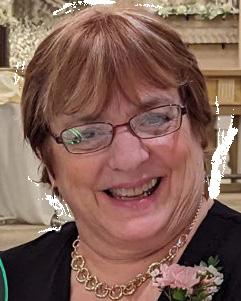
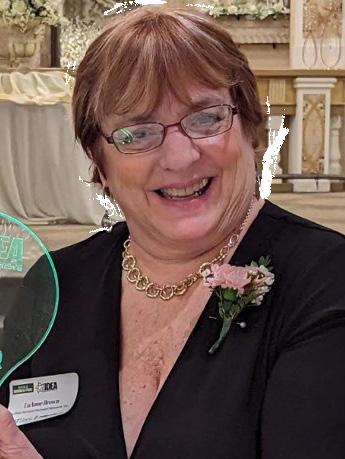
“We are all in this together,” she says P15
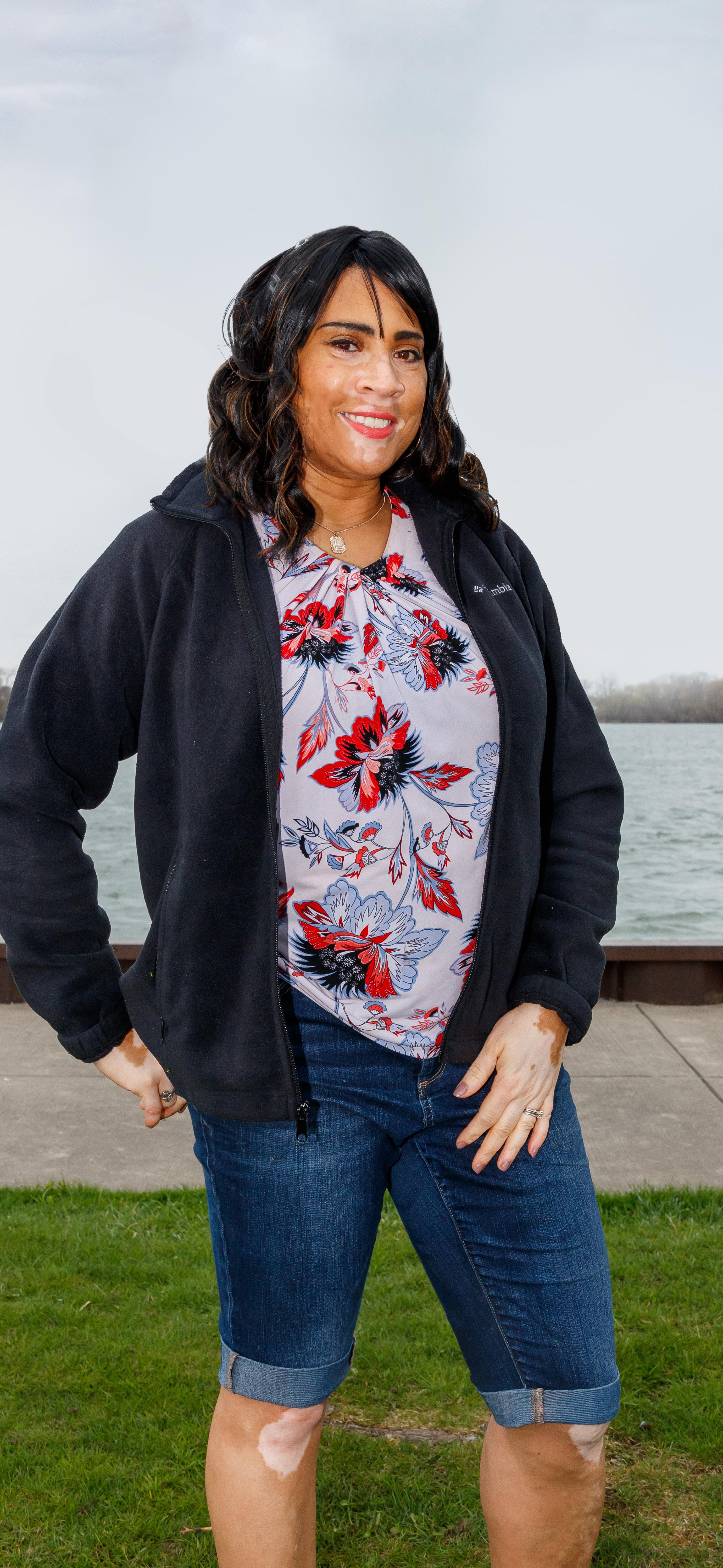
It's easy to keep your skin safer in the summer sun if you have the right sunscreen.
UCLA Health offers some tips for picking the best type and SPF level.
Getting sunburned just five times in a lifetime doubles the risk of getting melanoma, the most serious skin cancer, so making sure you're protected is worth the effort, the experts at UCLA Health said in a news release.
Types of sunscreens can be divided into two categories: mineral and chemical. Each type has its pros and cons.
Mineral sunscreen sits on the skin's surface. It physically blocks ultraviolet (UV) light before those rays can penetrate the skin.
While offering instant protection, it can be harder to rub in, needs to be applied more frequently and tends to leave a white film on the skin. Yet, it's also gentler than chemical sunblock, making it a good choice for sensitive skin, according to UCLA Health. Mineral sunscreen contains titanium dioxide and zinc oxide, both recognized as safe and effective by the U.S. Food and Drug Administration.
Chemical sunscreens allow UV light to penetrate skin, after which the chemicals convert the UV light into heat. This is released from the skin.
The downsides are that chemical sunscreens need to be applied at least
20 minutes before sun exposure and there are concerns about the ingredients in chemical sunscreens, especially oxybenzone, according to UCLA Health.
Some of the ingredients in these sunscreens may cause environmental issues, including damage to coral reefs. They may also pose health risks such as hormone disruption and allergic skin reactions.
Yet, they're also easy to rub in and leave less residue.
The FDA is waiting for more safety data before labeling them as safe and effective. Experts say the health risks of sun exposure far outweigh the potential risk of absorbing sunscreen chemicals.
When choosing the SPF, or sun protection factor, know that the higher the number, the longer the protection should last. With SPF 30, for example, it should take you 30 times longer to burn than if you weren't wearing sunscreen. But there's more to it than that.

All sunscreens protect against UVB rays, the main cause of sunburn and skin cancers. Broad-spectrum SPF also protects against UVA rays.
Sunscreen that is SPF 30 lets 3% of rays through. A higher protection number, SPF 50, allows 2% of rays through.
It's important to reapply, especially if you're sweating and swimming. The Skin Cancer Foundation
recommends using water-resistant, broad-spectrum sunscreen with SPF 30 or higher. You should reapply every two hours or immediately after swimming or sweating.
SPF protection above 50 is only slightly better than SPF 30, so reaching for a higher number doesn't matter as much.
What's important about the application method is this: what you are more likely to use and reapply.



If that's lotion, the Skin Cancer Foundation recommends applying at least 1 ounce, which is also 2 tablespoons or the amount that fills a shot glass.
For spray, keep applying until your skin glistens. The bottle may say “no rub,” but smoothing it into
your skin will ensure even coverage. Avoid using aerosol sprays on or near your face because they can contain ingredients that, when inhaled deeply, may cause irritation and possibly damage your lungs.

It may be better to avoid spray for young children, but you can also spray it onto hands and rub it onto your face or your child.
Stick sunscreen is great for small areas, such as the face and ears. Make four passes with the sunscreen over each area you're protecting, UCLA Health advises. Rub the sunscreen in afterward, for even coverage.
Even with this protection, opt to seek shade and wear protective clothing whenever possible.
UBMD Orthopaedic & Sports Medicine is the largest orthopaedics group in Western New York, committed to improving lives in our community. We provide treatment of the entire spectrum of musculoskeletal problems, such as bones, joints, muscles and more for all ages, children to adults.

Injuries from foot and ankle, hand and wrist to spinal conditions, joint, hip and back pain, knee, elbow, shoulder, concussion and sports medicine, our team of doctors, physical therapists, athletic trainers and other healthcare providers can help with any orthopaedic injury. We’re dedicated to being the best at making you better.

Team Doctors For:


Here are five ways to fight bad breath and keep your mouth smelling clean and fresh.
1. Brush up on your dental routine
Brushing at least twice a day for a minimum of two minutes each can help keep halitosis away, according to the Cleveland Clinic. Use a soft-bristled brush and replace it every three to four months to ensure your breath is clean and fresh.
Flossing is just as important as brushing, because it removes food from between your teeth so that bacteria can’t flourish there. Try to floss at least once a day.
The clinic also suggests using an antibacterial mouthwash that’s alcohol-free and scheduling regular dental cleanings to optimize your oral health.
2. Try tongue scraping
The Cleveland Clinic explains that while brushing your tongue can help with bad breath, “tongue scraping can do a better job at removing that plaque and bacteria off the tongue’s surface.”
The clinic advises using a stainless steel, plastic or copper tongue scraper after every brushing and flossing.
3. Deter dry mouth
According to the Mayo Clinic, there are a number of ways to keep dry mouth at bay, including drinking plenty of water, chewing sugar-free gum and sucking on candy. It also suggests avoiding tobacco products, sodas and coffee because these tend to suck the moisture out of your mouth.
4. Spice it up
One simple and effective way to keep bad breath at bay is by eating fresh or dried parsley leaves. And this spice isn’t the only one that has shown some success in helping alleviate the condition.
According to a study published in the Journal of Agriculture and Food Chemistry, ginger is also an effective natural remedy for fighting bad breath.
5. Eat for fresh breath
While some spices are good for bad breath, the Mayo Clinic recommends avoiding garlic, along with onions. In addition, foods with added sugar may increase your risk of developing halitosis.
If you have been practicing good hygiene and your bad breath is lingering, the Cleveland Clinic suggests talking to your dentist or health care provider. They can help determine if there’s an underlying cause for your bad breath, such as gum disease or other health issues. From there, they can provide you with the most appropriate treatments.

Q: Tell us a bit about your specialty.
A: I am a general pediatrician, so I see kids from birth to age 21 in a general pediatric outpatient setting. So primary care, pretty much.
Q: You’re relatively new to your practice. When did you start?
A: I’ve been a pediatrician for about three years. I finished my pediatric residency in 2019 in Rochester, moved back to Buffalo and have been practicing about three years.
Q: You do a lot of work in community outreach and recently organized a conference on the topic. What can you tell us about that?
A: So community health in general, aside from the Community Advocacy Conference, is really integral to the practice of pediatrics. It involves engagement of community members and community-based organizations to come together to meet the needs of kids and families. The reason why this is so important is because healthcare alone cannot meet all of the health and medical needs of families. And, on average, when you’re talking about an individual’s health, about 20% of your health can be attributed to medical care. More than 50% is attributable to social factors, the environment the individual is surrounded by, their community resources, their financial stability and support networks. So we need to build on those support networks within the community in
order to provide the best care that we can to families.
Q: Can you give an example of how that works in practice?
A: So if a family is coming into the office and I’m worried about the child’s increasing weight or labs that indicate that their cholesterol is increasing or that they have a marker for diabetes, that’s my concern. But the family may be concerned about housing issues, lack of access to healthy food, reliable childcare, etc. It’s very hard to meet the health needs of a patient with high cholesterol or pre-diabetes if the family is weighed down by other issues that are, understandably, higher on their priority list. I’m talking about the social determinants of health, which are so important to be addressing as physicians.
Q: What kinds of organizations do you work with?
A: Buffalo is really lucky in a lot of ways because we have so many community organizations that want to partner with the doctor’s offices and healthcare agencies. Food insecurity is an area of interest for me. There are organizations like Buffalo Go Green that partner with doctors’ offices to bring fresh produce to the clinical setting. And then we can do things like produce prescriptions where we give families vouchers to farmer’s markets and, with Buffalo Go Green the markets can come and set up outside our office. So we can actually refer families to the farmers’ market. So they’ve worked with us closely to do programming around nutrition and food access. Another organization we’ve partnered with is a diaper bank called Every Bottom Covered. We’ve noticed that many of our families don’t have access to diapers for their children. And diapers are one of the important items that have no exclusive federal assistance program, unlike food where there’s SNAP and WIC. So communities do rely on diaper banks. So we’ve partnered with Every Bottom Covered to improve the referral process from our clinic as well as helping us set up a diaper bank within our clinic. So those are kind of two examples.
Q: Do you get involved with resources for teenagers as well?
A: We’ve partnered with Hope Buffalo around sexual health programming and how to talk to teens about sexual health in a way that makes sense to them. They actually employ youth to help train physicians in how to communicate with them on the topic.

Q: Prior to becoming a doctor did you work within any of these kinds of organizations? Or did your interest come about more recently?
A: No, I never worked with these organizations as a youth myself, but I’ve always been interested in community engagement. When I was an undergrad I volunteered with the Jericho Road’s The Priscilla Project, which was an amazing experience for me to get to know some wonderful refugee families in the community and hopefully provide some assistance in the process. But it was during my residency in Rochester that I learned how we, as physicians, can engage in community health and advocate for patients in their families outside of the 15-minute visit. When you realize you can’t address all of the problems that you’d like to address, you have to partner with other organizations to meet all the concerns of the families.
Q: How successful have your efforts been to connect patients with these organizations?
A: Yeah, for sure. It’s been a work in progress over the past few years, and it’s one of my passions. I’m also the associate program director of advocacy for UB pediatric residency program, so I have the opportunity in that role to work with our pediatricians-in-training. My goal is to develop the community health and advocacy curriculum for them. My goal is for them to have at least one community partner for their projects that they’re getting input from. For the residents alone, we had 12 projects over the past year that incorporated community partners. I’m also co-medical director of the Buffalo Public School District, so that gives me the opportunity to interact with folks within the school district and help design policies and procedures within the school. I’m also the director of our Western New York Children’s Environmental Health Center, which works with community engagement to improve children’s environmental health. And that has a few different programs for screening for environmental concerns in a clinical setting such as housing-related concerns like molds and pests, and food insecurity as well. All these positions afford me the opportunity engage in all kinds of community help.
Name: Sarah J. Ventre, M.D., MPH

Position: Pediatrician, UBMD
Pediatrics; co-medical director, Buffalo Public School District; assistant clinical professor of pediatrics at the University at Buffalo; associate program director for advocacy, UB pediatric residency program
Affiliation: Oishei Children’s Hospital
Hometown: Colden
Education: SUNY Upstate Medical University (Master of Public Health and medical degrees); residency in pediatrics, University of Rochester; fellowship, Pediatrics for Equitable Developmental Start (PEDS) Learning Network, United Hospital Fund
Organizations: American Academy of Pediatrics
Family: Wife, two children
Hobbies: Hiking, paddle-boarding, indoor rock climbing
Fewer U.S. adults are smoking cigarettes, as rates dropped again last year, according to federal health officials.

In all, one in nine American adults smoked cigarettes last year, an all-time low, and a significant change from the 1960s when 42% smoked.
The results weren't all positive, the Associated Press reported, as vaping rose to about one in 17 adults. For 2022, use of electronic cigarettes was about 6% compared to 4.5% the year before.
These preliminary findings are from a survey of more than 27,000 adults by the U.S. Centers for Disease Control and Prevention. The findings are sometimes revised after further analysis.

“I think that smoking will contin-
ue to ebb downwards, but whether the prevalence of nicotine addiction will drop, given the rise of electronic products, is not clear,” Jonathan Samet, dean of the Colorado School of Public Health in Aurora, told the AP.
On average, crashes claimed the lives of 117 people a day — more than 42,000 in all for 2022
Traffic deaths are down on U.S. roadways, but the small drop pales in comparison to the surging rate of recent years.
Deaths in traffic crashes fell 0.3% last year compared to 2021, according to the U.S. National Highway Traffic Safety Administration (NHTSA).
On average, crashes claimed the lives of 117 people a day — more than 42,000 in all for 2022.
“Any reduction in roadway deaths is positive, but the minor decrease announced by NHTSA follows an unprecedented pandemic-fueled surge in roadway fatalities and dangerous driving,” said Jonathan Adkins, chief executive officer of the Governors Highway Safety Association (GHSA). He spoke in a news release from the governors' group responding to the NHTSA announcement.
The GHSA noted that traffic deaths surged 30% over the past decade. Between 2019 and 2022, they rose from 36,355 to 42,795, an increase of nearly 18%.
Dangerous driving behaviors, including speeding, impaired driving and not wearing a seat belt all increased between 2020 and 2021.
Pedestrian deaths reached a 40-year high of nearly 7,500 in 2021, according to a GHSA analysis. Early indications are that 2022 was also a deadly year for people walking, the group said.
“These roadway deaths are heartbreaking, unacceptable and preventable," Adkins said. "We will not accept such incremental safety progress after two years of escalating deaths and more dangerous driving on U.S. roads.”
Adkins pointed an approach outlined in the U.S. Department of Transportation's National Roadway Safety Strategy.
It calls for a number of measures, such as equitable traffic enforcement; infrastructure that slows down drivers and protects pedestrians, bicyclists and other non motorized road users; and community engagement campaigns developed with local input. It also recommends vehicle technology that protects people both inside and outside the vehicle and investments in post-crash care.
At UBMD Orthopaedics & Sports Medicine our physicians have performed countless joint repair, joint replacement and joint revision surgeries, helping patients recover their mobility and reduce or eliminate pain. Procedures include:

• Anterior hip replacement
• Posterior hip replacement
• Hip revision surgery
• Hip resurfacing
• Full knee replacement
• Partial knee replacement
• Kneecap replacement
• Knee revision surgery
Mark J. Anders, MD
K. Keely Boyle, MD
Evgeny A. Dyskin, MD
Joseph B. Kuechle, MD
Brian E. McGrath, MD
Christopher E. Mutty, MD
Scott R. Nodzo, MD
Matthew J. Phillips, MD
Sridhar R. Rachala, MD
Andrew P. Stegemann, DO

Editor & Publisher: Wagner Dotto
Writers: Deborah J. Sergeant, Jim Miller, Gwenn Voelckers, Anne Palumbo, Brenda Alesii, Ernst Lamothe Jr., George Chapman, Christ Motola, Jane Schmitt
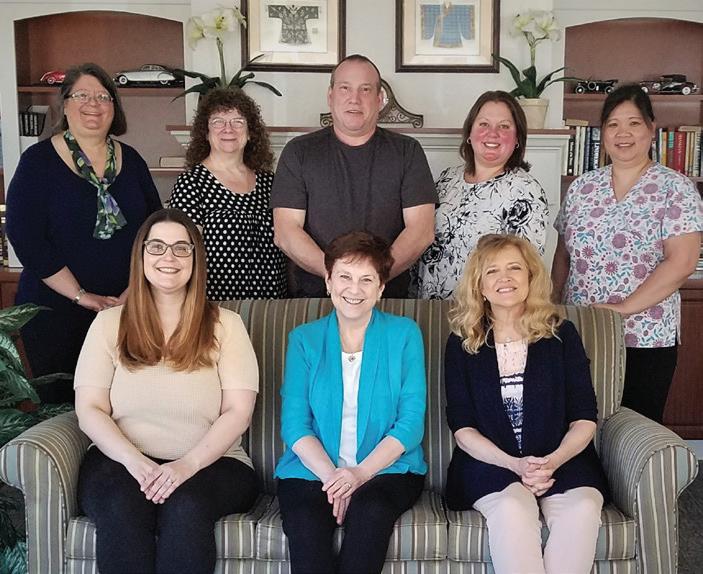
Advertising: Anne Westcott, Amy Gagliano, Pam Roe
& Design: Angel Campos-Toro Office Secretary: Allison Lockwood
No material may be reproduced in whole or in part from this publication without the express written permission of the publisher. The information in this publication is intended to complement—not to take the place of—the recommendations of your health provider. Consult your physician before making major changes in your lifestyle or health care regimen.
First, on the provider side, things are bleak. Nineteen hospitals closed last year due to bankruptcy. Industry experts estimate 630 hospitals are on the brink of financial disaster this year. Two hundred of those shaky hospitals serve rural or isolated populations. The pandemic hit nurses and physicians hard. We are entering a veritable crisis in nursing. The ANA estimates we will need 275,000 more nurses between now and 2030. The nursing shortage is worse than any other profession. The AMA estimates we will need between 38,000 and 124,000 more physicians over the next 12 years. And to make matters worse, the US population is aging. But the news isn’t all bad. The top six insurance companies made more than $41 billion last year. United Health Group lead the pack with $20.6 billion. The next five were Cigna $6.7 billion; Elevance, $6 billion; CVS, $4.2 billion; Humana, $2.8 billion; and Cetene, $1.2 billion.

As if things aren’t difficult enough for financially struggling hospitals, Centers for Medicare & Medicaid Services (CMS) is seemingly piling it on by stepping up enforcement of the requirement for hospitals to post prices for several select procedures online for the sake of transparency. Cash strapped hospitals are being fined hundreds of thousands of dollars. By posting prices, consumers can (supposedly) shop around for CT scans, surgery and other procedures. There are problems with the price posting requirement. First, most of us, if we know it or not, are in an organized hospital-centric
healthcare system. Your physician is going to refer you to providers within the system, limiting your choice of a hospital or CT scan. Although your insurance may allow you to go to any participating provider (shop around), for the sake of continuity you are better off staying within your system. Second, 90% of us are insured so none of us will ever pay the full price. It is irrelevant. Your commercial insurer has negotiated what it will pay on your behalf. Medicare and Medicaid have set what they will pay on your behalf. Your copay (or deductible) is determined by your insurer. We have all seen an “explanation of benefits” letter from our insurer indicating the hospital “priceorcharge” and what the insurer ultimately paid. The difference is typically astounding. Third, unlike a car or article of clothing, a hospital price has nothing to do with quality. It is a meaningless number so shopping around based on price is a fool’s errand. Out-of-pocket expenses are the price we pay. Most hospital billing offices can give you a good idea of what you will pay out of pocket based on your insurance.
If a country (England, Canada, France, Germany, Sweden, etc.) provides universal care for all, critics decry it as socialism. In our country, critics call Medicare and proposed “Medicare for all” plans nothing more than socialism. So, is Medicare still socialism when it is managed by a commercial carrier? Humana made $2.8 billion last year. Virtually all their business and profits were derived from running Medicare and Medicaid plans. United made more than $20 billion last year. One third of their business (and profit) was derived from Medicare and Medicaid plans. We pay into Medicare via payroll taxes all our life. Then, we are still faced with paying more via deductibles, copays and coinsurance. Now commercial insurers are raking in huge profits. But at least it’s not “socialism!”
Even a study recently published by JAMA (Journal of the American Medical Association) concurs. According to the study, chatbots answered more patient queries quicker and with empathy when compared to written physician notes. But instead of replacing physicians, the study proposes that chatbot + MD = better care. In fact, AI should assuage the projected physician and nurse shortage by freeing them up to focus on more critical cases.
The American Psychological Association has developed science-based guidelines regarding social media use by teens. There has been a surge in depression, anxiety and loneliness among teens and young adults attributable to social media. The guidelines are directed primarily at teens, parents, counselors and teachers. The APA recommends teens should receive training on the use of social media and parents should monitor social media use and limit screen time.

I discussed this briefly last month. In various studies, consumers are very satisfied with AI or chatbots.
In a week (as of this writing in early May), a federal three judge panel will determine the fate of the medical abortion pill. All three- judges have a history of ruling against abortion access or have stated an anti-access position. Most national polls and surveys reveal the vast majority prefers that mifepristone remain available on the market.

I have written about the fact that medical debt is the leading cause of bankruptcy in our country. The good news is that medical debt can no longer be considered by credit-rating companies. A reader of my column forwarded me some more good news. A nonprofit called RIP Medical Debt can help. Its website address is https://ripmedicaldebt.org.

George W. Chapman is a healthcare business consultant who works exclusively with physicians, hospitals and healthcare organizations. He operates GW Chapman Consulting based in Syracuse. Email him at gwc@gwchapmanconsulting.com.

19 hospitals closed last year due to bankruptcy. Another 630 are on the brink of financial disaster this year. Meanwhile, insurers post strong profits
Arthritis is a general term that many people use to describe pain or swelling in their joints. The health condition affects about one in four US adults (23.7%) or about 58.5 million people, according to the Centers for Disease Control and Prevention.
“Arthritis involves inflammation and joint pain, which can lead to reduced mobility and a lesser quality of life,” said Alysia V. Kwiatkowski, a rheumatologist in the division of allergy, immunology and rheumatology at the University at Buffalo.
Kwiatkowski, who is also program director of the internal medicine residency program at the department of medicine at UB, talks about five aspects of arthritis.

Osteoarthritis, also called degenerative joint disease, is the most common form. Arthritis symptoms vary depending on the type of arthritis and its severity. The most common symptoms include joint pain, stiffness and swelling. It can also cause fever, weight loss and fatigue. When patients ignore symptoms, conditions worsen to the point where it reduces mobility, making daily tasks more difficult. There is also inflammatory arthritis, which often connects to autoimmune issues. Natural wear and tear causes osteoarthritis on the joints and that comes from natural aging, while rheumatoid arthritis is an autoimmune disorder that occurs when the body’s immune system
attacks the joints. This can lead to inflammation and pain.
“There are some people who have a genetic predisposition to various types of arthritis. Also we caution patients about being overweight because we know that weight can cause damage to the joints,” said Kwiatkowski.
A person’s chance of developing arthritis increases due to several factors, including age. Rheumatoid on the other hand is more common among women and people with a family history of diabetes.
There are a variety of treatments for arthritis. The most effective treatment requires differentiating which type or types of arthritis an individual has. For osteoarthritis, some over-the-counter oral medications such as acetaminophen, ibuprofen or naproxen, as well as topical medications such as diclofenac gel, may be effective for mild to moderate arthritis.
“There are times when physical therapy is essential to recovery because it can strengthen the muscle around the joint,” said Kwiatkowski. “When you have strong quads and hamstrings it helps stabilize the knee and other joints.”
Oftentimes over-the-counter products such as BenGay, Aleve or other joint supplements offer short term relief. Those medications reduce inflammation and pain, including nonsteroidal anti-inflammatory drugs and disease-modifying anti-
rheumatic drugs. Physical therapy also allows improving mobility and reducing pain.
Most types of arthritis may have a genetic component.
“When speaking with patients, they often tell me their parents or grandparents had similar symptoms,” Kwiatkowski said. “Studies have shown that family history may contribute to rheumatoid arthritis. But it doesn’t entirely explain all the aspects of an individual’s risk. The condition can develop with someone with no family history but also often family members are exposed to the same environmental risk factors that could cause rheumatoid arthritis.
“There is a small link between osteoarthritis and people who have a genetic predisposition to autoimmune or rheumatoid arthritis,” said Kwiatkowski. “You see families that have thyroid conditions that pass on the condition that have some connections to arthritis.”
Arthritis is a very common health issue that can impact a person’s quality of life drastically. Having a better understanding of the variations of arthritis, its risk factors, symptoms and treatments remains essential for managing these issues. Getting diagnosed and treated early along with lifestyle changes will help improve mobility, reduce pain and live a better life.
“People don’t understand that there are more than 150 different forms of arthritis,” Kwiatkowski said.” I see patients where they have inflammation on their joints but it really is wear and tear as the essential issue. You have to know the exact cause and type of arthritis in order to properly offer treatment.”
There is a popular saying that pain is just weakness leaving the body. However, pain is letting the
body know there is a problem that should not be ignored. If someone feels pain because of an injury, their first thought shouldn’t be simply working harder.

“If you are experiencing pain, we would rather you see a health care provider so they can diagnose,” she said. “Early detection helps the issue from worsening and can prevent the need for surgery. Don’t simply push through the symptoms.”
Kwiatkowski did stress the need to exercise. She views routine activities as essential for stemming the tide of consistent arthritis pain.
“When you move your joints on a regular basis it helps the joints from being stiff. Your everyday decisions when it comes to your overall health make a significant difference in how your body handles ailments,” Kwiatkowski added.
If you struggle to sleep well at night, you could have a sleeping disorder. However, your sleeping habits — sometimes called “sleep hygiene” — could be to blame.
“There are hundreds of sleep disorders,” said Misol Kwon, Ph.D., registered nurse and research project assistant and data analysist at UB. “There are different diagnoses that require you to go on a sleep study. There are so many disorders, like restless leg, sleep apnea, narcolepsy and many more. You can have a sleep study to get evaluated. But there are also bad sleep habits. You can mention it to your primary care provider.”
This can help address the root cause, like pain or anxiety.
Kwon said that insomnia may include difficulty in falling asleep, staying asleep or awakening too early. Any of these can result in daytime sleepiness. Chronic insomnia occurs at least three nights a week for a
month or longer.
“The first step should be to evaluate sleep hygiene or healthy sleep habits,” said Soda Kuczkowski, sleep health educator, certified sleep coach and founder and owner of Start with Sleep, LLC in Buffalo. “If lifestyle and behavioral factors have been addressed with little to no success it may be time to evaluate for a medical sleep disorder or to speak with a sleep coach or consultant that can provide a more targeted approach to identifying the root cause of a sleep challenge through an investigative evaluation and sleep health education.”
Insomnia is the difficulty in falling or staying asleep. In addition to sleep hygiene, it’s also helpful to look at medications that can disrupt sleep, as well as food.


“Of course, caffeine is the biggest culprit here,” said Jane Burrell, registered dietitian, specialist in lifecycle nutrition and medical nutrition ther-
Sleeping: you’ve done it since you were a baby and it may seem like the easiest thing to do.
Until it isn’t.
That’s where a sleep specialist can help patients regain restful slumber.
Sleep specialists range from doctors who have training in physiology, pathology of the neurological system, and sleep or they could be “sleep coaches” whose training may be much less medical in nature.
“As a sleep health educator, we can be proactive in promoting health,” said Misol Kwon, Ph.D. and registered nurse research project assistant and data analysist at UB who educates on sleep health. “Sleep, nutrition and exercise are considered the three pillars to support physical wellness. But when someone says, ‘I slept three hours last night,’ it doesn’t get the same reaction as, ‘I ate candy
bars yesterday,’ or ‘I have a gym membership that I never use.’ We’re tolerant of sleep deprivation as a society. We equal pulling an all-nighter as being highly productive.”
One of her professional goals is to help people view sleep as vital to good health, backed up with research to show the science behind sleep’s benefits. She also said that sleep experts can help influence policies such as school hours and Daylight Saving Time.

Sleep specialist is a sub-specialty of specialties such as neurologist, otolaryngologist or pulmonologist. University of Rochester Medical Center offers a sleep specialist program after residency training. About 140
apy and associate teaching professor at Syracuse University. “Caffeine is a central nervous stimulant that can disrupt sleep. Consideration of all caffeine sources is important.”
In addition to cutting back on coffee and energy drinks after noon, look at consumption of black and green tea, sodas like cola and even orange soda. Chocolate contains 12 milligrams of caffeine. Although not as much as coffee’s 200 mg. (or black tea’s 100 mg.), it does contribute to the daily intake.
When you eat also may matter.
“Eating late at night may disrupt sleep as well,” Burrell said. “Additionally, irregular or inadequate sleep changes eating behaviors and leads
people complete the training each year and typically work in private practice or in academia.
“I love getting up every morning and doing what I do and expanding our current knowledge of circadian rhythm,” Kwon said. “Sleep is a relatively new field, two or three decades old. Every day we want to generate new science and implement things like behavior intervention for people’s health and well being.”
Sleep specialists also directly work with clients, such as Soda Kuczkowski, sleep health educator, certified sleep coach and founder and owner of Start with Sleep, LLC in Buffalo. She has worked in the industry for almost 18 years, initially at a diagnostic sleep testing facility, educating and supporting physician offices, hospitals, and community organizations about the risks of undiagnosed medical sleep disorders.

During that time, she started to self-educate and seek additional
to great consumption of highly palatable comfort foods.”
This may provide additional motivation to improve sleep, since comfort foods tend to cause weight gain.
Sleep hygiene is not about showering before bed, but the good sleep habits and environment that influence sleep. These include keeping the bedroom dark, cool and comfortable and reserved only for sex and sleep. Don’t watch TV or go online while in bed. Eliminate stressors in the room, such as piles of unfolded laundry, stacks of unopened mail or other reminders of tasks. Wear comfortable apparel.
Consider upgrading any worn bedding and pillows and the bed itself. Most mattresses are made to last only six or seven years.
If your bed partner disrupts your rest, seek help for issues such as snoring and restless leg syndrome. Address any pet disruptions also, as these can interrupt sleep.
Set a regular bedtime and stick to it, even on weekends. Use white noise to mask household sounds. Hanging curtains and including more fabric in your décor, like a tapestry wall hanging, can help absorb unwanted sounds.
Stop using screens two hours before bedtime and wind down with a relaxing bedtime routine such as a warm bath. Write down any troubling thoughts to set them aside until tomorrow.
Many people say that prayer, mindfulness or meditation helps them settle their thoughts before bedtime. Try using ear plugs and a sleeping mask for sensory deprivation.
training on sleep health education to better support patients. Eventually, she opened Start With Sleep, LLC to meet this need.
“I am very passionate about the subject and engaging the community in meaningful conversations about the importance of sleeping well as it helps to manage and maintain our overall health and well-being,” Kuczkowski said. “Sleep is the investment in the energy you need to be effective tomorrow.”
The Bureau of Labor Statistics doesn’t collect employment data for sleep specialists, since the specialty can be applied to so many different types of careers in a variety of environments.
According to Glassdoor.com, the estimated pay of a sleep specialist is $58,440 annually and for a sleep medicine physician, $253,914 per year. Salary.com listed the average salary for a sleep technician as $62,101. Specialists may work in a variety of settings, including as sleep coach or educator. Technicians likely work in a sleep lab of a hospital or outpatient setting as part of a team of providers. Sleep medicine physicians may teach or head sleep medicine departments.
t age 35, Kay-
la McKeon has an impressive resume. A 2022 graduate of Onondaga Community College in Syracuse, she meets regularly with Congress as the manager of grassroots advocacy for the New York Citybased National Down Syndrome Society (NDSS)to discuss issues involving Down syndrome and the disabled
She also helped design Mattel’s newest Barbie Fashionistas doll with Down syndrome. For McKeon, helping design the doll means more than a career highlight.
As a person with Down syndrome, the doll means representation in the toy aisle.
“When I was a little dolls who didn’t look like me,” McKeon said. “It’s an honor to help make a doll who looks like me with some of the same characteristics I
She suggested that the doll design should include a crease in its palm, a trait often seen in people with Down syndrome, and clinodactyly, a curved, short pinkie finger that often occurs as genetic syndromes including Down.
Some of the doll’s other traits indicate Down syndrome, including a flat nasal ridge, small ears, almond-shaped eyes with a tilt, a rounder face, a shorter frame and a longer torso. The doll comes with pink ankle foot orthotics and her sneakers include a zipper. These resemble the orthotics used by some children with Down syndrome. The doll’s dress is printed with a symbol of Down syndrome, yellow and blue butterflies and its necklace has bears three upward chevrons that symbolize the three chromosomes of Down syndrome, “a symbol of those lucky enough to be connected with Down syndrome,” McKeon
The idea for a Down syndrome doll began about a year ago as the NDSS
began discussing a partnership with Mattel to make the doll.
McKeon wants better representation so that the general public realizes that people with Down syndrome are more like others than unlike them.
“In school, I was included with my peers,” she said. “I want it to be like that everywhere. I live on my own in my own apartment. I have my driver’s license. I have a long-distance relationship.”
McKeon has been interviewed by numerous media outlets and starred Mattel’s video promotion of the new doll.
She hopes to “work herself out of a job” someday when people with disabilities are treated as equals. But in the meantime, she hopes to continue to advance her career with NDSS and perhaps help design a new doll.
McKeon is also considering going back to school to build on her associate degree in general studies. However, her work is keeping her plenty busy presently.
Nancy Carr, director of the Office of Accessibility Resources at Onondaga Community College, noted that McKeon was the first advocate for the NDSS who has Down syndrome.
“It bodes well for Kayla’s future,” Carr said. “Her personality has always been open, exploring, excited and confident. I think she had what everyone should have: a great support team, but she also has her own, innate outgoing personality.
“I like all the publicity the doll is getting; it’s long overdue. I like positivity and creativity and hope it opens the eyes of corporate America in that they’ve overlooked a sizeable population that should be represented. Kayla is wonderful to work with and I wouldn’t be surprised if other offers came her way.”
Christine Sirianni, past-president and current vice president of Family and Friends Down Syndrome Association of Niagara in Lewiston, shared her enthusiasm about the new Barbie.
“This brings awareness to the beauty and inclusion for people with Down syndrome,” Sirianni said.
A grandmother of six, she also has three daughters, one of whom has Down syndrome.
“It portrays the inclusiveness piece for people who aren’t typical, but someone with Down syndrome,” she said. “It was a very good awareness project of Mattel to do this.”
She wants to see a Ken doll with Down syndrome to further expand
Mattel’s line and represent boys with Down syndrome, too.
“This doll reflects the beauty of these children, inside and out,” Sirianni said. “It will help with promoting including and acceptance and awareness for our community to those who don’t have Down syndrome.
“And for those who have Down syndrome, they can feel far more valuable in life. Some may feel is more controversial, but with Friends & Family Down Syndrome Association, I can say we’re all very happy to have seen that doll. We’re all different in the world, but are we not all so much alike? We share the same human values and emotions. The doll will offer typical peers a good sense that they’re playing with the dolls and it’s just a different doll.”
She has ordered five of the dolls, one for each granddaughter.
Amy Monson, co-president of the Down Syndrome Parents Group of Western New York in Kenmore, has a 17-year-old son with Down syndrome. She feels pleased that the dolls have been selling out quickly, representing their popularity.
“It’s so important to have representation, even if it’s just in the toy aisle,” Monson said. “Because people with intellectual disabilities are so marginalized, this makes it look like they’re being seen since a huge corporation wants to represent them.”
She thinks that many typical kids will view the Down syndrome doll as yet another representation of what their community looks like. And children who do not know anyone with Down syndrome can learn as they ask questions about the doll.
Mattel’s 2023 Fall Fashionistas dolls, including the Barbie doll with Down syndrome, are available online and in stores for $10.99.
LEFT: Mattel’s newest Barbie Fashionistas doll is modeled after individuals with Down syndrome. Some of the doll’s traits include a flat nasal ridge, small ears, almond-shaped eyes with a tilt, a rounder face, a shorter frame and a longer torso. The doll comes with pink ankle foot orthotics and her sneakers include a zipper.

BOTTOM: Kayla McKeon poses in the studio with the new Barbie doll with Down syndrome. “When I was a little girl, I had dolls who didn’t look like me,” she says.

As any parent knows, your idea of a good time and your kid’s idea of a good time match like the pile of socks at the bottom of the laundry basket.
So, if you’re a parent who seeks entertainment ideas that will make at least 67% of your family happy, look no further. This list of activities that might just beat the odds and get a smile out of almost everyone in your family.
Most of these activities can be also customized for children of any age. So give them a shot. You only have boredom and bickering to lose.
There is something magical about staring into the night sky. When the time is right to stargaze, do some research about what constellations are visible. Then see if anyone in the family can connect the orbs in the sky to make a picture. You can also research the story of each constellation.

Take your kids on the putt-putt tour this season. Map out a few different places to play mini golf. Then create friendly competitions. See who has the most holes-in-one at the end of the tour. See who had the lowest combined score. See who won the most individual matches. See who landed in the water hazards the most. Make it silly.
Camping is a lot of fun, but it’s also a lot of work to travel far away from home. If there are campsites close to your home, rent one for a night or two. Then you don’t have to travel far to enjoy the outdoors. You


Not all milks are created equally when it comes to nutrients.
Reading the label can clue you in to what you're getting out of the beverage, whether it be plantbased or dairy, according to the U.S. Food and Drug Administration.
Nutritional content can vary between different plant-based products, the FDA said in a recent news release. Many don't have the same amount of calcium, vitamin D or other nutrients as dairy milk.
The only plant-based beverage that contains a similar enough nutrient content that it can be included in the dairy group in the federal government's Dietary Guidelines for Americans is fortified soy milk.
“The nutrients you get from plant-based milk alternatives can depend on which plant source is used, the processing methods and added ingredients, so check the label carefully,” said Susan Mayne, director of the Center for Food Safety and Applied Nutrition at the FDA. “Has the product been fortified with nutrients such as calcium? How much
added sugar is in the product? What is the protein content?”
“The Nutrition Facts label on the packaging can help you compare the nutrient content of the various plant-based milk alternatives to milk,” Mayne said. “The label can help you choose the best products to meet your nutrient needs and those of your family.”
Plant-based milks can be made from grains, such as oat, quinoa and rice; legumes, including pea and soy; nuts, such as almond, cashew, coconut, hazelnut, macadamia, peanut, pistachio and walnut; and seeds including flax, hemp and sesame.
These products may be a good alternative for people who are allergic to dairy milk or want to avoid dairy products for dietary reasons or personal preference, the FDA noted.
Some plant-based products have more calories than nonfat and lowfat dairy milk, so check the label if cutting calories is your motivation for choosing an alternative, the FDA suggested.
Dairy foods provide some key
also have a short trip home if it rains. And, if you forget something, your house is guaranteed to have more supplies than the park’s camp store.
4.Go to a park and tell your kids they’re teachers
Upstate New York is home to many state, county and private parks. Many of these parks have informational signs throughout them. Take your kids to one of these parks and have your kids teach you the information on the signs. Even if your child can’t read yet, they can use the pictures to design a story. The role reversal will make it fun.
Let each member of your family plan a barbecue. They have to set the menu and help prepare the meal. They can pick their favorite barbecue foods. Sure, one of your barbecues might be just cheese puffs, baked beans, and buttered rolls, but everyone will enjoy the autonomy.
6.Go
Add some extra adventure to an everyday hike by going somewhere that is new to everyone in the family. Then you can work together to analyze the trail map and plan out the hike. A new hike will encourage collaboration. Just don’t get lost.
A movie night may sound cliched, but if you spruce it up, you just might get instant buy-in. Plan out a series of movie nights. Each night, each member of your family gets a different responsibility. One person can pick the genre. Another person can pick the movie. Another one can pick a candy. Another one can pick
a salty snack. Shake things up and settle in.
8.Find the best ice cream parlor within 20 miles of your house

Research all the ice cream places that you can reasonably get to over the next few months. Keep a record of which places had things like the best ice cream, the best toppings, the biggest sizes, the funniest sundae name or the softest napkins. The whole family will enjoy being a judge in this delicious competition.
9.Chalk for a better world
Make it your mission to find new and creative places to leave chalk art. You could chalk the end of a neighbor’s driveway with a beautiful picture or kind message. You could go to a public park and leave words of encouragement for strangers. You could go to a family member’s house and draw them a mural to brighten their world for days to come. Chalk is an easy way to spread joy.
10. Have a “say yes” day Set a monetary budget and some gentle boundaries and let the family embark on a “say yes” day. What is a “say yes” day? It’s as easy as it sounds; someone volunteers an idea and you have to say yes. Remind your kids to be reasonable, and then let them live out their simple and realistic dreams. Ice cream for breakfast? Yes. Family video game tournament? Yes. Swimming in a lake? Yes. Three playgrounds in one day? Yes. Let your imagination run you right into happiness.

nutrients, some of which people are not getting enough of in their diets. The nutrients in milk include protein, calcium, vitamin A, vitamin D, magnesium, phosphorus, potassium, riboflavin, vitamin B12, zinc, choline and selenium.
The FDA suggests choosing milk and plant-based milk alternatives that are higher in protein, vitamin D, calcium and potassium.
These nutrients can help build
bones and teeth, muscles, cartilage, skin, blood, enzymes and hormones. They can help people maintain their blood pressure. Some are needed for proper muscle, kidney and heart function.
The FDA recently issued draft guidance that recommends plantbased milks voluntarily include a nutrient statement that communicates how the product is nutritionally different from milk.

Chief executive officer of BPPN working with a group to ensure healthy births for all mothers; initiative triggered by high risk of pregnancy-related mortality faced by Black women
Serena Williams is a powerful force in the world of tennis, having won an extraordinary 23 Grand Slams, furthering the role of women — particularly women of color — in the sport and establishing herself as a global business titan.
Despite those lofty credentials, Williams nearly died after giving birth to her daughter. She had a history of life-threatening blood clots.
Williams has chronicled how she had to advocate for herself when the symptoms of a clot cropped up during childbirth — even after the continuous dismissal of a healthcare provider. Indeed, Williams’ intense pain and shortness of breath was a result of several pulmonary embolisms. Had they not been discovered, the clots could have traveled to her brain or heart, causing serious damage or even death.
This situation is not unique to Black women in the United States. The Buffalo Prenatal Perinatal Network (BPPN) and a number of community partners are raising aware-
ness about Black maternal health. The organization said it is committed to making equitable, systemic, changes through policy, clinical care, engagement to improve the disparities and birth outcomes.
In Good Health spoke to LuAnne Brown, a Lancaster resident who is CEO of BPPN. Brown worked for 30 years at Women’s & Children’s Hospital, last serving as chief nursing officer.

Q. Why do Black women face three times the higher risk of pregnancy-related mortality than white women?
A. All Black women deal with structural racism. Look at Serena Williams, a wealthy woman with a lot of resources, in great shape, but is suffering from pulmonary embolisms after childbirth. No one was listening to her. Structural racism results in “weathering,” which can cause stress, potentially increasing cortisol levels, may stimulate labor. A Black woman who emigrated from Africa has a better labor outcome
than someone who grew up in the United States. Implicit bias takes many forms — Black woman often aren’t listened to, and there may be a perception that they don’t feel pain as others do. We all have biases, but we need to recognize them.
Q. How does BPPN help expectant mothers?
A. We service women in highrisk neighborhoods. One effective approach to improving birth outcomes is home visits, providing women and families with education and support, including referrals. We doulas [who are non clinical personnel] provide physical and emotional support during labor but also to expectant and postpartum moms. For example, we will be starting a pilot project where BPPN staff will teach women how to self-monitor with blood pressure cuffs, record their numbers on a log, teach what’s normal, and hopefully stem potential problems. We also do breast-feeding education, screen for domestic violence, substance abuse and depression, which is common. There is a fear among some women that their baby will be taken away if they acknowledge feelings of depression and anxiety. I have some staff who go doorto-door to help with implementing health programs. We found a woman living in her car with a toddler.
Q. Who else does BPPN help?
A. Our client base is 50% African American, 40% Hispanic and 10% white or multiracial. The impact of COVID-19, economic insecurity and the number of women who are fleeing states with strict abortion laws are adding to the maternal health crisis.
We also have fatherhood programs, offering support groups, teaching men co-parenting skills and how to engage with their children, which we hope leads to a decrease in conflict. Staying in school is highly encouraged. We’ve taught classes in the holding center and have seen good outcomes; the guys love it.

Q. How long has the organization been in existence and how many families do you typically serve?
A. BPPN was launched in 1987. We serve 1,000 families per year. As part of our outreach, we set up all sorts of activities in the community: Easter egg hunts, Halloween parties, summer picnics, a fall feast, Christmas parties, to name a few. During COVID-19, we even dropped food off on porches and set up a pantry at the agency.
Q. Can you share a success story?
A. There are many. I remember one client who got pregnant at 12. She finished high school, continued to further her education and became a licensed practical nurse. Her son recently graduated from college. She speaks about her experience and how she overcame so many obstacles with our support.
Q. How is BPPN funded?
A. Mostly grants from the Office of Child & Family Services, NYS Department of Health, United Way, and Community Foundation for Greater Buffalo.
Q. How can BPPN be reached?

A. Our phone number is 716-8846711; website: www.bppn.org; our office is located at 703 Washington in Buffalo.


Enjoy reading In Good Health newspaper? The paper is free to you but very expensive to produce and distribute. Keep the publication going. Consider supporting the publication. If you are a reader, please become a paid subscriber. If you’re a nonprofit, a medical practice or organization, consider advertising in the paper. You will get a great deal of exposure since the paper is everywhere for the entire month. We will even design your ad at no charge.
For more information, send an email to editor@BFOhealthnews.com
— Type “Support” on the subject line.



The trauma caused by child abuse and neglect doesn’t end with the incident. These crimes also inflict harm as children must recount what happened again and again.
This is one reason that Child Advocacy Center of Niagara “provides an array of services in Niagara County,” said Shelley Hitzel, licensed master social worker and executive director of the organization.
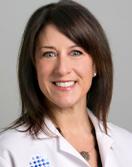



CAC of Niagara is the local chapter of a nationwide model. Hitzel explained that creating an organization that offers a complete array of services under one roof prevents children and their families from having to go from place to place around the community for services.
“This reduces the potential risk for recrimination by telling their story over and over,” Hitzel said. “We wrap services around the child in every area they need. It’s a cultur-
ally sensitive interview and provides therapeutic medical services and evidence-based therapy onsite. We offer anything that the child may need as a result of the abuse. We want to, as much as possible, mitigate the effect of abuse and help support non offending parents.”
CAC offers a forensic interview, medical exam, acute mental health counseling, referrals for needs such as food, housing and safety and continued support throughout the immediate recovery and legal and court process.


Most children who affected by physical or sexual abuse know the offender. Because it is someone they trust and feel comfortable with, the abuse destroys the children’s framework for understanding how relationships work and how to trust.

CAC also offers community education to children who have not reported abuse. By working in school
districts in Niagara County, CAC offers both prevention education on how to stay safe and how to report if they or someone they know needs help.
CAC employs 13 and operates from Niagara Falls Memorial Medical Center, one of the few hospital-based CACs. One of CAC’s organizational goals for 2023 is to increase its promotion of child abuse prevention among school districts and expand its time with children beyond the initial experience of abuse.
“Like many things health or safety prevention-related, it has to be a cultural, generational change,” Hitzel said. “We’re starting to get this information to children so they understand what child abuse is, help them understand boundaries, healthy sexual development and who are the people they can tell if something is happening to them. The long-term goal is to form a generational standpoint to encourage people to change the narrative and encourage people to speak out and speak up if they’re concerned about child abuse occurring.”
Headquartered in Cheektowaga, Erie County Department of Social Services’ Child Protective Services investigates child abuse and maltreatment and refers families to numerous services in the community to assist families with things that lead to these crimes to prevent risk factors.

“It’s important because we need to protect our children and our community,” said ECDSS First Deputy Commissioner Catie Gavin. “We need to ensure that children can live safely in their own homes and community. Any traumatic incidences can cause long-term issues for children, whether PTSD or school issues and other long-term impacts.”
She added that the organization strives to interrupt the cycle of generational abuse while respecting for family culture and values. The organization contracts with schools, daycares and other organizations for preventative and foster care work.

“Child abuse prevention is not an issue solely for the Department of Social Services or even agencies that we contract with,” Gavin said. “It’s a
Shelley Hitzelcommunity issue. Everyone should feel empowered to be kind and reach out to people who they believe are stressed or they believe are at risk for child abuse or maltreatment.”
She believes that in some cases, knowing that others care and receiving some emotional support could help prevent child abuse.

ECDSS also makes it clear that although poverty itself is not child abuse or maltreatment, programs are available to relieve the stressors caused by poverty and that this can help improve the chances of successful parenting.
“If a parent refuses to access those programs, we will look at it that it may be neglect, but it may be not knowing where to get help and how to advocate for themselves to get out of that situation,” Gavin said.
Child abuse and neglect are not only problems of low-income families. Gavin stressed that every socioeconomic group can experience these issues and that her organization is “very busy throughout Erie County.”
ECDSS employs 400 in a variety of roles, from casework to support staff, along with contracting with nonprofits throughout the county. The department handles 10,000 to 12,000 allegation cases of child abuse or neglect annually.
My husband and I now get most of our protein from plant-based foods: legumes, quinoa, chia seeds, tofu and dairy products.
While we are long past any growth spurts, we still need protein to preserve muscle mass, maintain balance, manage weight and recover from injuries.
Compared to getting protein from meat, however, it’s not always easy to get our daily allotment of protein from plants.
But a food product we recently discovered has facilitated that effort: plant-based pasta.
Most plant-based pastas have considerably more protein than your average refined-wheat pasta. Plus, their pronounced flavor satisfies us more than regular pasta.
Read on for more good reasons to eat plant-based pasta. And why “more protein” is just the tip of this nutrition-packed iceberg.
• Loaded with fiber. Most plantbased pastas have over twice the fiber of regular pasta. Fiber is a boon to health because it stabilizes blood sugar levels, promotes regularity and ferries bad cholesterol out. Many studies suggest that increasing fiber reduces our susceptibility to heart disease, cancer, stroke and diabetes.

• Fewer and healthier carbs. Not only do plant-based pastas have
fewer carbs, but the carbs they do have are the “good” ones—the complex ones. Because these carbs have more fiber than simple carbs, you’ll feel fuller longer and be less likely to overeat. Moreover, their slower digestion provides a steady stream of energy and minimizes spikes in blood sugar.
• Good for the planet. Eating more plant-based proteins can also help protect the environment.
Livestock accounts for around 14.5% of the world’s greenhouse gases each year, which is roughly the same amount as the emissions from all the cars, trucks, planes, and ships combined in the world today. Holy cow! Greenhouse gases, as you may know, contribute to global warming and climate change.
Anne Palumbo is a lifestyle columnist, food guru, and seasoned cook, who has perfected the art of preparing nutritious, calorie-conscious dishes. She is hungry for your questions and comments about SmartBites, so be in touch with Anne at avpalumbo@aol.com.


Enjoy reading In Good Health newspaper? The paper is free to you but very expensive to produce and distribute. Keep the publication going. Consider supporting the publication. If you are a reader, please become a paid subscriber. If you’re a nonprofit, a medical practice or organization, consider advertising in the paper. You will get a great deal of exposure since the paper is everywhere for the entire month. We will even design your ad at no charge.
For more information, send an email to editor@BFOhealthnews.com

— Type “Support” on the subject line.
Read nutrition labels carefully. While most types of plant-based pasta are similar in terms of calories and overall nutrition, they can vary greatly in protein and fiber content. Also, plant-based pasta shouldn’t take the place of whole vegetables in your diet, as the nutritional content of pasta pales in comparison to actual vegetables. Consider adding vegetables to your pasta dishes to boost nutrients.

Serves 4-6
For the dressing:
1 garlic clove, minced
½ cup fat-reduced mayonnaise
1/3 cup light sour cream
½ cup fresh parsley
½ cup fresh basil

2 tablespoons chopped chives
2 tablespoons fresh lemon juice
1 tablespoon olive oil
½ teaspoon salt; ¼ teaspoon coarse black pepper
For the salad:
8 oz plant-based pasta (I used red lentil for high protein and fiber)
1 cup cherry tomatoes, halved
2 medium carrots, chopped
1 cup shelled edamame, cooked Parmesan cheese, shredded
Boil the pasta in a large pot of salted water, according to the package’s “al denté” instructions. Once pasta is finished cooking, rinse under cool water and drain well.
While pasta is cooking, make the dressing. Combine all the ingredients in a food processor or blender and purée until smooth.
Transfer cooled pasta to a large serving bowl. Add the cherry tomatoes, carrots, edamame, and dressing, tossing well to combine. To serve, top with grated Parmesan.
You can enjoy better health and safety by making a few changes this summer.
1.Don’t slack off on your preventive health. “Stay up to date on recommended vaccines, including COVID-19,” said Kara Kane, public information officer for Erie County Department of Health.
With the busyness of summer vacations and so many fun events, it’s easy to let these important appointments slide. Routine vaccines have been safely used for decades and have prevented innumerable life-altering and fatal illnesses.
2.“Practice good safety around swimming pools and bodies of water, especially when children are present,” Kane said.
This includes swimming with a buddy—not alone—and having the children complete swimming lessons if they don’t know how to swim. Avoid swimming in restricted areas and places without a lifeguard present. Never allow unruly horseplay while children are swimming. Do not allow children to swim if they have been ill and always use a proper swim diaper for those not yet potty trained. Secure your home pool and keep it clean according to the manufacturer’s directions.
3.“Prevent tick-borne illness by reducing risks of tick bites,” Kane said.
Use tick repellent spray. Stay on
the trail while hiking. Tuck pantlegs into socks and wear light colors, so ticks are more visible. Check for ticks after spending time in tall grass or in the woods. Keep your property clear of brush, as that’s a preferred habitat for ticks. Eliminate plantings that attract deer, which are tick carriers. Follow Erie County’s Facebook page (https://www.facebook.com/ecdoh) to receive updates on tick-borne illnesses and other important health information.
4.Use your safety gear. It may seem like kids’ stuff to use safety gear. However, Kane wants to see anyone who’s participating in outdoor activities to gear up.
“Wear a helmet when biking and rolleskating and wear a life jacket when boating or going out on the water,” she said.
5.Drink more water. Instead of loading up on sugar in summertime beverages, from soda to energy drinks to sweet tea, minimize intake of these drinks to cut empty calories. Opt for club soda, unsweetened iced tea, or ice water with fruit, vegetables or herbs, which can help skip calories while keeping hydration interesting.
6.Eat more whole foods.
Picnics, festivals and parties are easy places to find processed foods, like hot dogs, fried foods and fatty meat. Finding more foods close to their natural state helps reduce intake of sodium, fat, additives and excess calories. Grilled chicken breast
Although the summer weather feels good, too much heat and sun can cause health problems.
Sun exposure — not temperature — can cause skin cancer. However, most exposure happens during the warmer months of the year.
The American Academy of Dermatology Association named skin cancer as the most common kind of cancer nationwide, with 20% of the population receiving a diagnosis at some point, totaling 9,500 new diagnoses daily. The five-year survival rate is 99% if caught early. However, once it spreads to nearby lymph nodes, that drops to 68% and if it spreads to more distance lymph nodes, it plummets to 30%.
Limiting sun exposure can significantly decrease the risk of skin cancer.
“Protect yourself from sun exposure and sunburn,” said Kara Kane, public information officer for Erie
County Department of Health.
The CDC recommends using 15 SPF sunscreen with UVA and UVB filter. It should be reapplied every two hours and after excessive sweating, swimming and towel drying.
Women who wear makeup should apply sunscreen first or ask a dermatologist about two-in-one products like a tinted moisturizer with SPF or foundation containing SPF. Water-resistant products are recommended during exercise or swimming. Covering the skin and wearing broad-brimmed hats and sunglasses can also help, as well as avoiding exposure to the sun at midday.
According to the EPA, “nearly half of UV radiation is received between 10 a.m. and 4 p.m., when the sun’s rays are the strongest.” But keep in mind that even on a cloudy day it’s possible to be sunburned.
If the body becomes too hot, untreated heatstroke can damage the brain, heart, kidneys and muscles.
or fish, corn on the cob and fresh fruit salad are a few examples of healthful, whole food-based summertime fare.
7.Buy local produce. Whether from a farm stand, farmers’ market or community supported agriculture program, “it’s about how things are processed and how far they travel before you eat them,” said Jamie Symmonds, event organizer for Willow Consulting and founder and organizer of the Lewiston Artisan Farmers’ Market in Lewiston. It’s about how things are processed, like fresh crushed organic juices. They don’t sit on a shelf for weeks and weeks. It’s a healthy option to shop. You know where your food comes from, what ingredients are included. Your fruits and vegetables can be local and organic.”

Shopping at a farmers’ market can also encourage trying new things, as farmers selling there often talk with browsers about their goods and how they may be used. And “sometimes you see new and interesting things,” Symmonds added.
8.Try a CSA. In general, a CSA is an agreement in which a consumer pays upfront for the farm’s produce for the season. Each week for a pre-designated time period, the
Pregnant women can experience preterm delivery. According the CDC, the very young, elderly people and those engaging in heavy physical activity are all more prone to heat exhaustion and heatstroke.
“The CDC has a very informative resource for dealing with hot temperatures,” Kane said. “People can prepare themselves and their households for heat with information and resources from https://www.ready. gov/heat.”
Planning includes scheduling outdoor activities in the early morning or evening, not during the hottest parts of the day. Wearing light-colored, loose-fitting clothing and drinking fluids can help prevent heat exhaustion and heatstroke.
Heat exhaustion leads to heatstroke if untreated. Heat exhaustion manifests with higher body temperature, cool, sweaty and clammy skin, thirst, head and body aches, slow pulse and feeling faint. By the time a person reaches the stage of heatstroke, the body is not sweating as much, exhibits hot, flushed skin and the person feels nauseated, confused or possibly unconscious.
Hydration can help prevent heat exhaustion and heatstroke. Caffeinated beverages can cause more fluid loss, so water is a better choice. Most
Marketcustomer receives a box (“share”) of the farm’s harvest. Some farms allow CSA customers to help harvest and some sell other local products in their shares, such as maple syrup, honey, baked goods and jam.
9.Pick your own produce. In addition to obtaining fresher, lower-cost produce; picking your own fruits and vegetables helps kids better understand the source of their food. Many farms offer U-pick experiences that include other activities. Visit www.pickyourown.org to find out where to go. Kane said that the Erie County Department of Environment and Planning/Office of Agriculture maintains a site, ErieGrown (www.erie.gov/eriegrown), which offers local sources for fresh produce.
10. Raise your own fruits and vegetables. Gardening often encourages children to feel more vested in their food. Whether it’s a veggie plot or grown in a pot, children love raising, preparing and eating homegrown produce. If you have the space, consider planting perennial produce, like fruit trees, raspberries, strawberries (these last two to three years), scallions, and rhubarb.
healthy people need to drink half their weight in ounces each day, so a 130-pound person would need about 65 ounces of fluids daily. That’s a little more than eight glasses of eight ounces each.
Juice, tea and other beverages count towards that total, but water should be the go-to beverage choice, as it’s free of calories. To keep it more flavorful and appealing, try adding cucumber slices, fruit or herbs like basil, mint, dill or tarragon.
Summertime weather typically means warm, sunny skies. However, it’s also thunderstorm, tornado and flood season. But heat in the atmosphere mixing with cooler air can generate serious storms. After weeks of little rain, a heavy rainstorm can cause flooding in some areas.
“It’s a good time to prepare for extreme weather, like storms that could cause power outages or flooding, too,” Kane said.
Again, www.ready.gov offers resources for preparing such as building a family kit for power outages, developing a family plan for weather emergencies and tips for dealing with flooding.

Buffalo resident was diagnosed with the condition at age 25. Now 52, she has become an advocate for those who suffer from it. “We are all in this together,” she says
By Jane SchmittVitiligo is easily defined as an autoimmune disorder. But it’s not so easily understood.
Lisa Toner knows that all too well.
For many years, the Buffalo woman has lived with the condition, which strips the skin of melanin and results in white spots or blotches. And along the way she has endured the physical and emotional challenges that come with it.
Now she’s looking to help others and increase awareness through a local chapter of VITFriends.org, a national support community for people with vitiligo.
Toner launched Blooming Buffalo VITFriends on Facebook in January with a strong message: “We are all in this together.”
“Being brought up on Buffalo’s west side and spending many years in Texas before returning to New York, I have learned about adapting to change,” she said. “[But] the most agonizing change started when I was 25 years young. That’s when vitiligo inserted itself into my life.”
She was living in San Antonio at the time and working at a restaurant when she noticed tiny white spots
around her cuticles. Over time, the spots spread on her hands and then to other parts of her body. Her primary doctor diagnosed it as vitiligo.
The National Institute of Arthritis and Musculoskeletal and Skin Diseases (NIAMS) describes vitiligo as a chronic autoimmune disorder that causes patches of skin to lose pigment or color. This happens when melanocytes — skin cells that make pigment — are attacked and destroyed, causing the skin to turn milky white.
Patches typically appear symmetrically on both sides of the person’s body, such as on the hands or knees, but sometimes there can be a rapid loss of pigment over a large area. Vitiligo, which affects an estimated 2% of the population, is seen in people of all ages and races. The condition also may cause abnormalities in the retina.
There is no cure, according to NIAMS, but treatments may hinder the progression and help the skin tone to appear more even. They include medications such as corticoste-
roids; light therapy or phototherapy; and depigmentation therapy.
But costs may be high and insurance coverage varies.
Emotional stress, sun exposure and trauma to the skin such as a cut or burn can trigger the spread of vitiligo. Over the years, Toner herself has tried creams and gels, but said she isn’t satisfied with the results.
“I think one of the biggest misconceptions is that it may be contagious,” said Toner, a direct support specialist at Community Services for Every1. “People may be afraid to hug or touch you; they think something bad is going to happen to them. I can see the fear in their eyes, the uncertainty. That has been a struggle for me.”
Indeed, the condition can trigger anxiety, depression and isolation as individuals limit social interaction because of their physical appearance. As Toner put it, they sometimes become “prisoners of their own skin.”
“I have had to constantly remind myself that even though my skin was changing, my true self, my true identity, was not changing along with it,” she said. “It’s hard. When I was younger, my mother told me that people are often afraid of what they don’t understand. And in the 26 years that I’ve lived with vitiligo, I have found that, yes, there is ignorance. But people are more accepting of it now, I believe, because there is more about vitiligo in the media. And there is a lot of information online.”
While outreach and education chip away at the stigma, Toner said there still is much to be done. Working to increase awareness are organizations such as the Vitiligo Research Foundation, the Vitiligo Support and Awareness Foundation and the Global Vitiligo Foundation. Another resource: www.myvitiligoteam.com
June 25 will mark the 13th annu-
al World Vitiligo Day, whose mission is to create a safe space for those affected by vitiligo to learn, share and celebrate. (See 2023.wvdusa.org for information about U.S. events.)
“In America there are [millions of] people diagnosed with vitiligo,” said Toner. “There are others who have not been diagnosed because they are afraid to go to a doctor and get checked out. They live in secrecy, they live with shame and embarrassment, and they hope it will go away on its own.”
She created Blooming Buffalo VITFriends as a way of connecting with others. Now she is busy reaching out to area dermatologists who can encourage patients looking for help and resources.

“My goal, first and foremost, is to be a support for people in this community who are living with vitiligo and to let them know that they are not alone,” Toner said. “When they hear a voice inside say, ‘You’re ugly,’ I’ll be that encouragement to them and say, ‘Hey, we are in this together and I’m not going to let you sink deeper into this hole. I have been where you are and was able to get out.’ Everybody has their own journey with vitiligo, but there is help out there.”

“My goal, first and foremost, is to be a support for people in this community who are living with vitiligo and to let them know that they are not alone.”
-Lisa Toner.Photos courtesy of Donny Green.
Numerous studies have linked the Mediterranean diet to a reduction in prostate cancer risk and improved outcomes for men diagnosed with prostate cancer. While typically touted for its benefits in losing weight and improving heart health, the effect appears muddled as far as its effect on the prostate.
“It is important to conduct more studies focusing on risk factors for prostate cancer by stage and grade,” said Ying Wang, Ph.D. and senior principal scientist at the American Cancer Society. “In addition, the most recent nutrition and physical activity guidelines from the American Cancer Society found that men diagnosed with prostate cancer who consumed a Mediterranean dietary pattern tend to have lower risk of death from any cause.”
This may suggest that the Mediterranean diet may promote overall good health in some men, regardless of the presence of prostate cancer.
“While some evidence suggests that following a Mediterranean diet may help reduce the risk of prostate cancer in certain populations, it is important to replicate these findings in other populations and look at different prostate cancer outcomes,” Wang said. “Furthermore, it is essential to recognize that diet is just one of many factors that can contribute to the development of cancer.”
She added that other factors, such as age, family history and race or ethnicity cannot be controlled. However, “avoiding tobacco use, maintaining a healthy body weight, engaging in regular exercise and limiting alcohol consumption, also help to lower the risk of developing prostate cancer.”

The Mediterranean diet loosely aligns with the dietary portion of the American Cancer Society Guidelines for Diet and Physical Activity, which emphasizes a mostly plant-based diet.

“Men who are at elevated risk of prostate cancer may want to discuss their diet and other lifestyle factors with their urologist or other healthcare provider, particularly a registered dietitian nutritionist to help reduce their risk,” Wang said. Why the Mediterranean diet appears to reduce the risk of developing cancer has to do with the type of foods consumed — and those that aren’t.
Bill Krellner, 18-year prostate cancer survivor and group leader of Zero/US TOO of WNY, supports the healthful eating patterns of the Mediterranean diet. The group frequently hosts guest speakers, including physicians and dietitians to help diagnosed men and their loved ones better understand prostate cancer.

“Recently, U.S. News & World Report ranked 39 different diets in 2023 and the Mediterranean diet came out on top in several categories,” Krellner said. “It was ranked the best and number one for bone and joint health, family friendly, healthy eating and best plant-based diet. It was second to DASH diet for heart healthy. It’s supposed to be good for losing weight and improving healthy aging and sexual function and to reduce the physiological effects of stress. Because of this, they say that most men involved with prostate cancer should definitely look into this kind of diet.”
He also referenced research of men with prostate cancer who on the Mediterranean diet and a control group of those not on the diet.
“If someone was going through radiation for prostate cancer, these people were not affected by the side effects as much on the Mediterranean diet,” Krellner said.
Healthful foods appear to help lower the risk of more aggressive prostate cancer. Krellner said that aspects of the diet include nuts, a variety of fruits and vegetables, olive
oil, fish, and whole grains.
“I know diagnosed men on the diet whose PSAs are dropping,” Krellner said.
The prostate gland produces prostate-specific antigen, or PSA. A blood test can measure the level of PSA and indicate whether the cancer is advancing or remaining stable. Diagnosed men who choose active surveillance have PSA testing periodically to monitor their cancer.
In addition, men should avoid alcohol or those who do should limit their consumption to no more than two servings daily. The two-per-day limit for men who drink cannot be rolled over for a weekend binge. It’s even better to eliminate alcohol. Processed foods, cured meat and sugar should be eliminated and red meat should be minimized. Dairy should be consumed in moderation — one to two servings daily — as high dairy intake is associated with lower
prostate health. Men should consider alternative sources of calcium like leafy greens, beans or bone broth or supplements.
The Mediterranean diet’s effect could be caused by enhancing the immune system along with reducing inflammation, which offers the body the best chances against disease.
Making just a few dietary tweaks like adding a “superfood” to an unhealthful diet does not represent a silver bullet for preventing or beating prostate cancer.
“Forty-two percent of newly diagnosed cancers are potentially avoidable because of lifestyle,” Krellner said.
Eating an overall healthful diet is part of a healthful lifestyle, along with receiving regular care from a healthcare provider, sufficient aerobic and resistance exercise, adequate sleep, stress management and avoiding substance use, including tobacco.

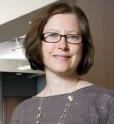


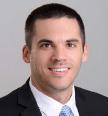




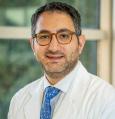


Does Medicare cover physical therapy, and if so, how much coverage do they provide? My 66-year-old husband was recently diagnosed with Parkinson’s disease and will need ongoing physical therapy to help keep him moving.
Worried Wife





Yes, Medicare does indeed pay for physical therapy along with occupational and speech therapy too, if he needs it, as long as it’s prescribed by his doctor. You’ll also be happy to know that Medicare has no limits on how much it will pay for therapy ser-



vices, but there is an annual coverage threshold you should be aware of. Here’s what you should know.



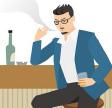


To get Medicare Part B — which covers outpatient care — to help cover your husband’s physical therapy, it must be considered medically necessary and will need to be ordered by his doctor. The same holds true for occupational and speech therapy.
He can get these services as an outpatient at a number of places like a doctor or therapist office; in a hospital outpatient department; at an outpatient rehabilitation facility; at skilled nursing facilities if he is being treated as an outpatient; and at home through a therapist connected with a home health agency when he is





ineligible for Medicare’s home health benefit.




For outpatient therapy, Medicare will pay 80% of the Medicare-approved amount after you meet your Part B deductible ($226 in 2023). You will be responsible for the remaining 20% unless you have supplemental insurance.
But be aware that if his therapy costs reach $2,230 in a calendar year (2023), Medicare will require his provider to confirm that his therapy is still medically necessary. Medicare used to set annual limits on what it would pay for outpatient therapeutic services, but the cap was eliminated a few years back.

You also need to know that treatment recommended by a physical therapy provider but not ordered by a doctor is not covered. In this situation, the therapist is required to give your husband a written notice, called an Advance Beneficiary Notice of Noncoverage or ABN, that Medicare may not pay for the service. If he chooses to proceed with the therapy, he is agreeing to pay in full.
If your husband happens to need physical therapy at an inpatient rehabilitation facility like at a skilled nursing facility or at your home after a hospitalization lasting at least three days, Medicare Part A — which provides hospital coverage — will pick up the tab.
To be eligible, his doctor will need to certify that he has a medical condition that requires rehabilitation, continued medical supervision, and coordinated care that comes from his doctors and therapists working together.


Whether you incur out-of-pocket




costs such as deductibles and coinsurance, and how much they are, will depend on the setting for the treatment and how long it lasts. For more information on inpatient therapy out-of-pocket costs see Medicare. gov/coverage/inpatient-rehabilitation-care.



If your husband is enrolled in a Medicare Advantage plan (like an HMO or PPO), these plans must cover everything that’s included in original Medicare Part A and Part B coverage. However, some Advantage plans may require a person to use services from physical therapy practices within an agreed network. If he has an Advantage plan, you’ll need to contact his specific plan before selecting a physical therapy provider to confirm they’re within the network.


If you have other questions about coverage and costs for therapeutic services, call Medicare at 800-633-4227 or contact your State Health Insurance Assistance Program (SHIP), which provides free Medicare counseling. Visit ShipHelp.org or call 877-839-2675 to connect with a local SHIP counselor.

The longstanding longevity gap between American males and females has widened to 5.9 years, the biggest discrepancy between the genders in 25 years, according to the Centers for Disease Control and Prevention.
Part of the reason why women live longer is that the types of employment ranked most dangerous tend to be male-dominated ones.
The Bureau of Labor Statistics lists the most dangerous jobs in order as: tree trimmers and pruners; commercial pilots (not including passenger plane pilots); farm and ranch animal workers; loggers; roofers; first-line supervisors of farming, fishing and forestry workers; agricultural equipment operators; heavy and tractor-trailer truck drivers; underground mining machine operators; and farm equipment mechanics and service technicians. These all employ many more men than women. But at any age, males are more likely to die than females, so it’s not only job-related.
The entire reason why women live even longer remains unclear. However, adopting a few healthful strategies can increase their chances of healthy longevity.
Gail Markowski, adult-gerontology nurse practitioner program coordinator at UB, said that biological differences between the two genders represent one factor as to why women live longer.

“It is felt that estrogen in women protects from heart disease by reducing circulating levels of ‘bad’ cholesterol,” Markowski said. “Physically, men have more fat surrounding their organs, known as visceral fat. Women have fat under their skin, known as subcutaneous fat. The fat that surrounds the organs which men have predicts heart disease.”
She added that women’s stronger immune systems also help.
Higher testosterone levels also weaken the immune system, as does the effects of aging for men.
“While women have two X chromosomes, men have an X and a Y,” Markowski explained. “Many men begin to lose their Y chromosome in some of their cells as they age. This appears to be especially true for smokers. The loss occurs mainly in cells that undergo rapid turnover, such as blood cells. Scientists have found that men who suffer Y chromosome loss are more likely to die at a younger age and suffer from Alzheimer’s disease and cancer. There is recent research indicating that losing the Y chromosome causes fibrosis — scarring — in the heart, resulting in heart failure and an earlier death.”
The biological effects of gender are immutable. However, Markowski said that men can improve longevity through lifestyle changes.
“Many men are involved in more risky behavior such as excessive alcohol use, tobacco use, driving more recklessly and eating more indulgently,” she said. “Alcohol consumption, smoking and a diet of eating whatever is desired lead to heart disease, increased cholesterol,
Identity theft affects millions of people each year and can cause serious harm. Protect yourself by securing your personal information, understanding the threat of identity theft and exercising caution.
Here are 10 things you can start doing now to protect yourself and your loved ones from identity theft:
1. Protect your Social Security number by keeping your Social Security card in a safe place at home. Don’t carry it with you or provide your number unnecessarily.
obesity and diabetes, which in itself is a risk factor for cardiac and vascular problems contributing to a shorter lifespan.”
Seeking proper healthcare and preventive care could also help more men increase their longevity instead of “toughing it out” when sick or hurt, she added.
“Waiting longer before seeking medical care can cause disease or illness diagnosed at a later stage makes treatment more difficult and often leading to poor outcomes,” Markowski said.
Typically, women use healthcare earlier and more frequently. That extends to mental healthcare as well, since the stigma for doing so is often higher for men. Women also tend to find better means of improving mental health.
“Men have anxiety and depression just as women do, but women may have healthier coping mechanisms such as exercise, yoga or forms of self-care,” Markowski said.
Forming close friendships with other men and forging tighter family bonds can also help improve mental health.
“Fitness and physical activity generally reduce the risk of chronic diseases, which can play a role in longevity and quality of life,” said Kara Kane, public information officer for the Erie County Health Department.
Most men of healthy weight should engage in a minimum of 150 minutes of moderate physical activity per week. Men who are overweight may need more.
Kane encourages men — or women — who are interested in improving their healthful longevity to look into the resources available from the Centers for Disease Control and Prevention, including www.cdc. gov/physicalactivity/index.html and www.cdc.gov/physicalactivity/basics/older_adults/index.htm to learn more about physical activity.
According to the Centers for Disease Control and Prevention, cancer was the second leading cause of death, after heart disease, in the United States in 2020. In 2020, there were 602,350 cancer deaths; 284,619 were among females and 317,731 among males.
2. Be careful when you speak with unknown callers. Scammers may mislead you by using legitimate phone numbers or the real names of officials. If they threaten you or make you feel uneasy, hang up.
3. Create strong, unique passwords so others can’t easily access your accounts. Use different passwords for different accounts so if a hacker compromises one account, they can’t access other accounts.
4. Never give your personal or financial information in response to an unsolicited call or message, and never post it on social media.
5. Shred paper documents that contain personal information, like your name, birth date and Social Security number.
6. Protect your mobile device from unauthorized access by securing it with a PIN, adding a fingerprinting feature, or using facial
Q.: How do I schedule, reschedule or cancel an appointment with Social Security?
A.: For many things, you don’t need an appointment to transact business with Social Security. For example, you don’t need an appointment to file for benefits or appeal a disability decision. You can file for the following benefits online at www. ssa.gov:
• Retirement.
• Medicare.
• Spouses.
• Disability.
If you don’t want to apply for benefits online, or if you need to speak to us for any other reason, you can schedule, reschedule, or cancel an appointment by one of the following options: Calling us at 1-800-772-1213 (TTY 1-800-325-0778) between 7 a.m. to 7 p.m., Monday through Friday. Contacting your local Social Security office.
recognition. You can also add a password and adjust the time before your screen automatically locks.
7. Regularly check your financial accounts for suspicious transactions.
8. Avoid internet threats by installing and maintaining strong anti-virus software on all your devices—including your mobile device and personal computer. Use a virtual private network (VPN) to stay safe on public Wi-Fi. Do not perform certain activities that involve sensitive data, like online shopping and banking, on public Wi-Fi networks.
9. Protect yourself on social media by customizing your security settings and deleting accounts you no longer use. Also, double-check suspicious messages from your contacts, as hackers may create fake accounts of people you know.
10. Never click on any link sent via unsolicited email or text message—type in the web address yourself. Only provide information on secure websites.
We encourage you to create your own personal My Social Security account to track your earnings record. For more information, please read our publication, “Protecting Personal Information,”åå at oig.ssa. gov/files/21-540_Protecting_Personal_Information.pdf. Contact us if you see suspicious work activity on your record–you could be a victim of identity theft.
Please share this information with your family and friends.
Q.: How long do I need to work to become eligible for retirement benefits?
A.: Everyone born in 1929 or later needs 40 Social Security credits to be eligible for retirement benefits. You can earn up to four credits per year, so you will need at least 10 years of work to become eligible for retirement benefits. During your working years, earnings covered by Social Security are posted to your Social Security record. You earn credits based on those earnings. If you become disabled or die before age 62, the number of credits needed to qualify for Social Security benefits depends on your age at the time you die or become disabled. A minimum of six credits is required to qualify for Social Security benefits regardless of your age. You can create a my Social Security account to check and periodically monitor how many credits you have. Just go to www.ssa.gov/ myaccount.

Latest AARP research attaches value to the estimated 2.1 billion hours of unpaid care provided by family caregivers

Unpaid care provided by 2.2 million family caregivers across New York state is valued at $39 billion a year, according to new state data available in AARP’s latest report in the Valuing the Invaluable series.
This is an $8 billion increase in unpaid contributions since the last report was released in 2019.

The report highlights the growing scope and complexity of family caregiving and actions needed to address the many challenges of caring for parents, spouses, and other loved ones.



“Family caregivers play a vital role in New York’s health care system, whether they care for someone at home, coordinate home health care, or help care for someone who lives in a nursing home,” said David McNally, AARP New York director of government affairs and advocacy. “We want to make sure all family caregivers have the financial, emotional and social support they need, because the care they provide is invaluable both to those receiving it
and to their community.”
AARP New York is fighting and will continue to fight for family caregivers and the loved ones they care for. Right now, AARP New York is urging state lawmakers to include in the state budget due April 1:

• $9.5 million more to ensure all who qualify for can receive in-home services for the elderly such as home delivered meals and assistance with daily activities — which support family caregivers in helping older loved ones age at home, rather than in less desirable, far costlier and mostly taxpayer-funded nursing homes;


• Fair pay for home care by setting a floor of 150% of the regional minimum wage for home care workers to address a worker shortage and ensure all who need home care can receive it, and;

• $15 million more for the long term care ombudsman program, which provides nursing home oversight and acts as the eyes and ears of residents — most of whose family caregivers are working full-time jobs

and raising families of their own –but which has been woefully underfunded.
• $3 million more for the access to home program, which provides financial assistance to make residential units accessible for low- and moderate-income persons with disabilities – which would help support family caregivers in their efforts to ensure a loved one can remain in their own home.
Read the full report for national















and state-by-state data on the economic value of unpaid care by family and friends. Go to aarp.org and type “Insight on the Issues” in the search button. And see local county-level data on number of caregivers, number of hours of caregiving and value of unpaid caregiving for New York state. Resources and information on family caregiving are available at aarp.org/caregiving.
We did it! We made it through winter to the blissful days of yellow dandelions and green grass, buzzing bumblebees and leaves blooming on the trees (minus the allergies!). Still, we might feel some leftover strain from being indoors during those long winter months.
So here is a list of five outdoor activities to help you relieve stress this summer in Buffalo, with a local licensed therapist to weigh in on the mental health benefits of spending time outside.
Christopher Kijowski is a clinical social worker with over 30 years of experience working with adults to help them manage anxiety, depression and substance abuse. His approach consists of cognitive behavioral therapy (CBT), solution focused brief therapy (SFBT) and dialectical behavior therapy (DBT). Each of these therapies are holistic and personalized methods of helping individuals achieve their wellness goals.
ways to manage high cholesterol and help with weight loss. About 100 calories are burned for every mile hiked. In addition, “People who lose weight through hiking or walking maintain the loss and continue to lose while those who lose through dieting tend to gain weight again quickly,” according to the American Hiking Association (AHA).
laxation of floating on the water with beautiful views, and the intense core workout from paddling if you have more of a destination in mind.
The Buffalo area has a few kayak rentals and tours to choose from, so you don’t have to worry about going out and buying expensive equipment. From the old grain elevators to the Erie Canal, our city offers an amazing historical backdrop to adventure through. The top three recommended kayak rental experiences are BFLO Harbor Kayak, Elevator Alley Kayak, and Mutual Riverfront Park.

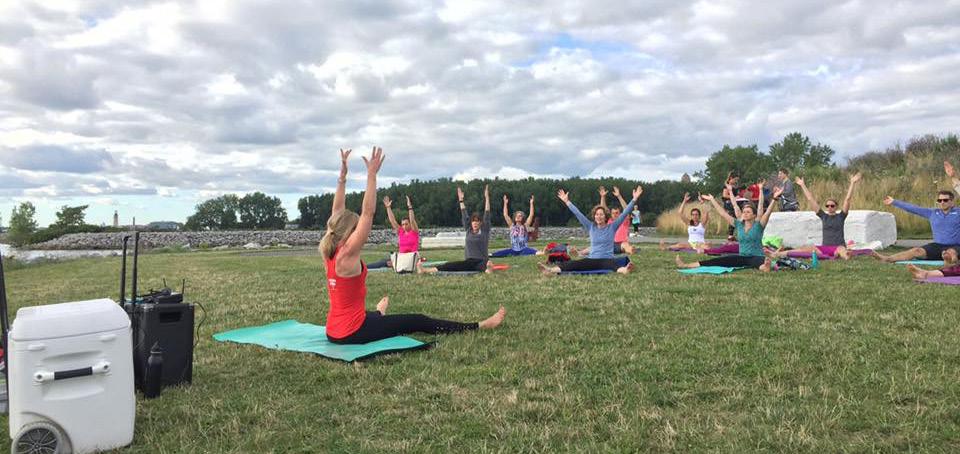
Walking or hiking releases adrenaline stored in the body and results in “an immediate decrease in tension and anxiety,” according to the American Psychological Association (APA).
Kijowski explained the relationship between our autonomic nervous system and stressful events we experience in life. The sympathetic nervous system controls our fight or flight response, and the parasympathetic controls our rest and digest functions. “Most commonly the autonomic nervous system comes into action when there is a threat or perceived threat.”
“Over time an accumulation of stressful life events and traumas can cause an imbalance in these two systems. These stresses can be as simple as something in the environment such as a work deadline. Such a response can cause stress hormones to be released into the body at an elevated rate that can cause psychological changes in the body.”
“Research indicates that chronic stress can contribute to high blood pressure and can cause changes that contribute to anxiety, depression and addiction. Chronic stress may also contribute to obesity by causing people to eat more, or more indirectly by causing changes in sleeping and eating patterns as well as a decrease in exercise,” Kijowski said.
Lucky enough, hiking helps to combat diabetes, hypertension and obesity! Hiking is one of the best
Presented by Independent Health and the YMCA Buffalo Niagara, these free fitness classes led by YMCA certified instructors encourage physical activity and healthy lifestyles. Dates and class types for this free summer series are to be announced, but last year’s lineup included: HIIT (high intensity interval training), ZUMBA at Canalside, Barre style classes, LA’ Movement Fitness, Soma Cura Yoga at the waterfront, and a boot-camp style class called “Fit Like a Gladiator.”
According to the National Institute of Health (NIH), outdoor natural environments may provide some of the best all-round health benefits. Exercising outside can trick your brain into thinking the workout is easier, which may contribute to higher levels of success in meeting fitness goals.
Research shows that these “lower levels of perceived exertion” reduce stress, improve mental fatigue, boost mood, self-esteem, and even a person’s perception of their own state of health.
“Exercise within green spaces and the great outdoors may be a useful natural medicine to address health challenges facing developed countries. Alongside the social aspect which some individuals crave, it may also increase enjoyment and adherence to bring about positive behavior changes in a large proportion of the population,” according to the NIH.
Kayaking tones and strengthens your muscles. It lowers the risk of heart disease and stroke. It can boost self-esteem, focus and memory. According to new studies, rowing releases neurotransmitters associated with an increased attention span and the ability to focus. It also exercises the hippocampus, the part of your brain responsible for verbal memory and learning.
Picnics can also promote friendships, physical activity and mindfulness, all of which reduce stress and improve overall health.
Vitamin D promotes healthy bones and a strong immune system. Eating outdoors increases your exposure to sunlight, boosting your Vitamin D levels and giving extra value to your meals and snacks. Research also shows that slowing down while you eat improves digestion and prevents stomach upset.
Kijowski emphasized the importance of getting outside, no matter the activity.
Whenever possible, he likes to engage in “walk and talk” therapy. He also cited a Japanese practice known as “shinrin-yoku” (“forest bathing”) as an additional method one might use to deepen their connection to nature and improve health.
Music is my go-to therapy, and music outside, whether surrounded by nature or a city skyline, amplifies its healing power. The Buffalo Niagara region has over 25 different free outdoor music experiences to choose from this summer with genres to suit every taste.

Listening to music keeps your brain young and in shape. According to Johns Hopkins School of Medicine, listening to music “provides a total brain workout,” and keeps your brain engaged during the aging process. “Music is structural, mathematical and architectural. It’s based on relationships between one note and the next. You may not be aware of it, but your brain has to do a lot of computing to make sense of it.”
Music also reduces stress, anxiety, blood pressure and pain. One new study found that patients undergoing surgery who listen to music under anesthesia may wake in less pain-- and even require less medicine for recovery. Another study found that “music was shown to diminish stress of the surgical team along with reducing the patient’s anxiety before surgery.”).
Kayaking offers an amazing mind-body workout with both the re-
Picnics are the perfect way to get back in touch with nature, and back in touch with the food you put in your body. It allows you to take the time out to enjoy nourishing your body in a more natural, healing way.

“The concept of forest bathing has been shown to enhance physical and emotional well-being and thus increase the amount of joy we experience,” Kijowski said. “It is a conscious and mindful practice of being immersed in the sights, sounds and smells of the forest.”
“This practice, as well as simply going out for a walk, has been shown to help improve weight loss, decrease stress and blood pressure and increase our happiness. As a result, we can develop increasingly proactive responses to stressful life events,” leading to “a decrease in anxiety and depression,” he added.
For the best hiking trails in Bufalo:

• alltrails.com/us/new-york/buffalo
To find free music events, visit: • bestofwny.com/concerts_festivals/
For Kayak Rentals:
• BFLO Harbor Kayak 44 Prime St, Buffalo, NY 14202 716-288-5309 bfloharborkayak.com
• Elevator Alley Kayak 65 Vandalia St, Buffalo, NY 14204 716-997-7925
• Mutual Riverfront Park 41 Hamburg St, Buffalo, NY 14204